Disclosure: Some of the links below are affiliate links, meaning, at no additional cost to you, Storehacks may earn a commission if you click a link to an external source.
If you're an online seller, you've probably heard Shopify and Amazon thrown around in the same sentence a lot lately.
Amazon is the 800-pound gorilla of ecommerce and with a jump from 37% in 2017 up to 50% market-share of US ecommerce retail sales in 2021, it’s easy to see why entrepreneurs think Amazon is the go-to place to launch an ecommerce business.
On the other hand, Shopify is Canada’s largest public company and they are hot on the heels of Amazon.
Given the size of these two ecommerce giants, it's natural to wonder which platform is better for your business.
But is this really a competition? And if it is, which one should you choose?
In this post we'll take a closer look at Shopify and Amazon, discuss what they’re both about, and what the key differences are so you can decide which platform is right for you.
Shopify vs Amazon: What’s The Difference?
Before we dive into the finer details of Shopify and Amazon, we first must get a basic understanding of how they both work and what the main differences are.
Shopify is essentially a website building platform that is geared specifically towards the ecommerce scene. If you want to create your very own online store selling products then Shopify is the solution you need.
You’re essentially starting from scratch with Shopify and adding your own logo, colors, products, pages, blog posts and more. Whilst it sounds like it might be a challenging task to set up, it's quite the opposite. Shopify has made it easy for even the most novice internet users to create their own ecommerce store.
Amazon is a massive marketplace where sellers list products for sale in the hopes that some of the 300 million active Amazon users buy them.
If you’re selling on Amazon there are a few different business models you can use, which we’ll go through later in this article, but the main difference that sellers notice instantly is that you can't customize your own online store like you can on Shopify.
So in a nutshell, Shopify is more about you and your brand and Amazon is more about competing with other sellers on a huge marketplace. There are definitely some pro’s and con’s of both which we will explore as we continue this battle of the titans Shopify vs Amazon review.
All About Shopify
No platform or website builder is perfect and even though Shopify is definitely one of the best when it comes to stand-alone ecommerce website builders, there’s always going to be reasons why some people love it and others don’t.
Let’s explore some of the key features of Shopify so you can work out whether it’s the right option for you.
Shopify Features
- Standalone website with hosting & SSL included
- Choose from 10 free themes or over 70 paid themes
- Integrated payment gateway (Shopify Payments)
- Third party payment integrations (PayPal etc)
- Blog, contact page and other website features included
- Basic abandoned cart email followups
- Order confirmation emails
- Integration with thousands of apps for inventory management, shipping, sales & marketing and more.
Some of these features might seem a little daunting if this is your first time looking at Shopify but overall the platform is very user friendly.
Once you set up your Shopify account, you just need to drop your logo, brand colors and some basic website features onto your site via the theme editor.
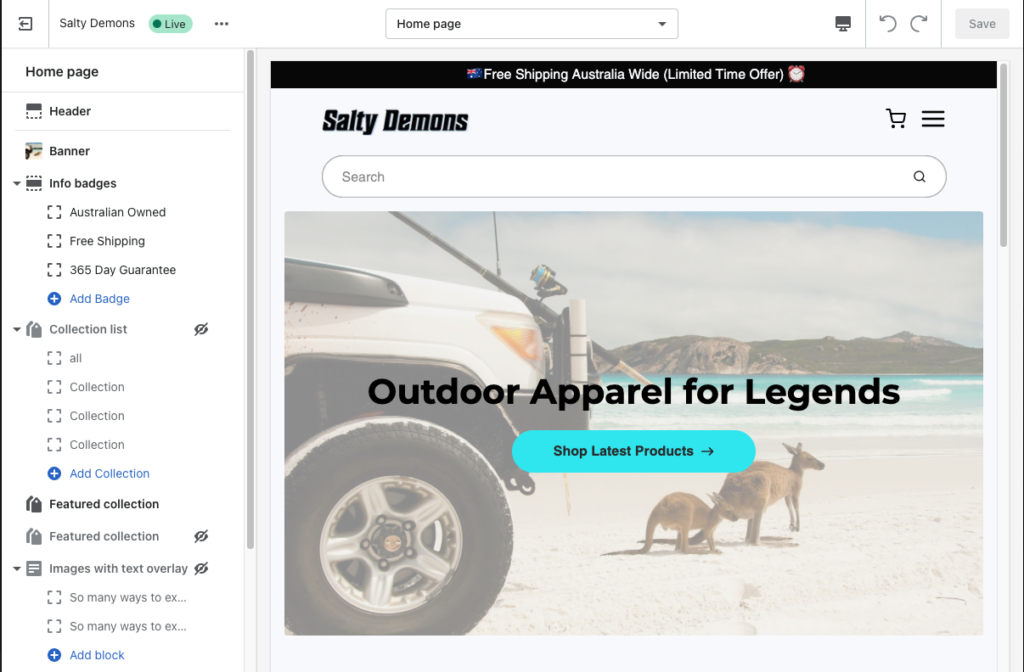
If you wish, you can start adding apps to your store to help with certain things like product fulfilment or marketing. For example we love selling jewelry in our stores and use ShineOn Jewelry and their amazing app to automate the entire process.
When it comes to collecting customers reviews we love Loox reviews and yep, you guessed it, there’s an app for that too!
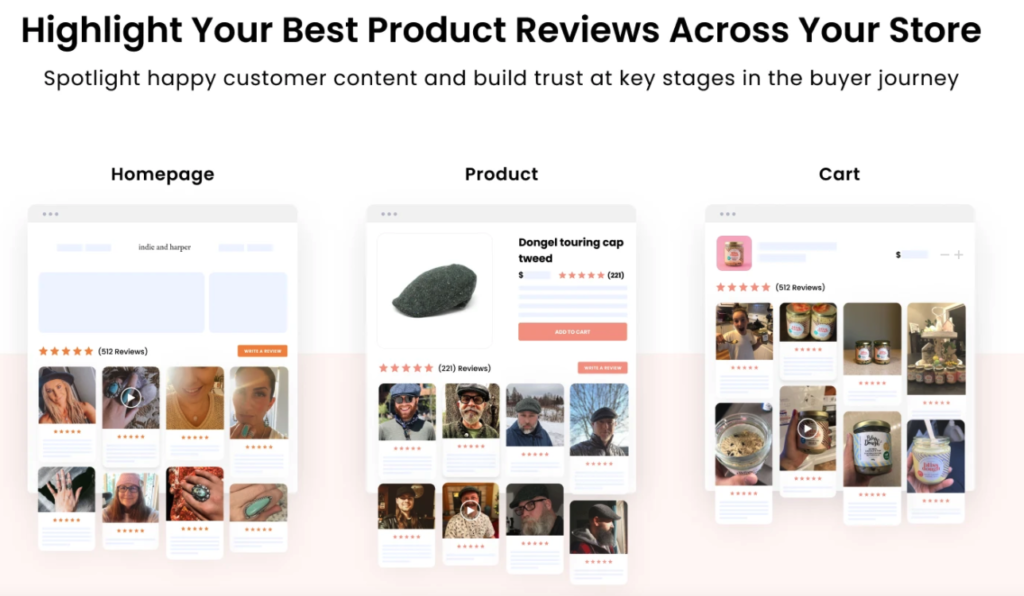
Apps from POD companies and other tools like review apps are really just the start when it comes to the customization abilities of Shopify. Apps are optional and whilst some will cost you a monthly fee, there's a lot of free ones that you can add too.
While we're talking about fees and charges, let's take a look at the next big question that a lot of people ask.
How Much Does Shopify Cost?
Pricing is often a big factor when considering what ecommerce platform to choose so let’s explore how much Shopify costs for sellers.
With the exception of the enterprise plan called Shopify Plus, which will set you back at least $2k per month, Shopify offers three standard monthly subscription options.
- Basic Shopify – $29 per month
- Shopify Plan – $79 per month
- Advanced Shopify – $299 per month
So what’s the difference between the three Shopify plans? Well for starters you only get basic reporting features with the Basic plan. The Shopify and Advanced plans give you a lot more data when running reports to measure the performance of your store.
Shopify also charges a transaction fee for using their integrated payment gateway, Shopify Payments. You’ll pay 2.9% + 30c for every transaction that occurs on your store, but this rate drops when you upgrade to either the Shopify plan or Advanced Shopify.
- Basic Shopify – 2.9% + 30c for every transaction
- Shopify Plan – 2.6% + 30c for every transaction
- Advanced Shopify – 2.4% + 30c for every transaction
All About Amazon
Now that we’ve established what Amazon is and what it is not, it’s time we take a closer look at what’s involved if you want to start selling on Amazon.
If you’ve ever bought something from Amazon or you’re familiar with something like eBay you’ll know what an ecommerce marketplace is like and how it operates.
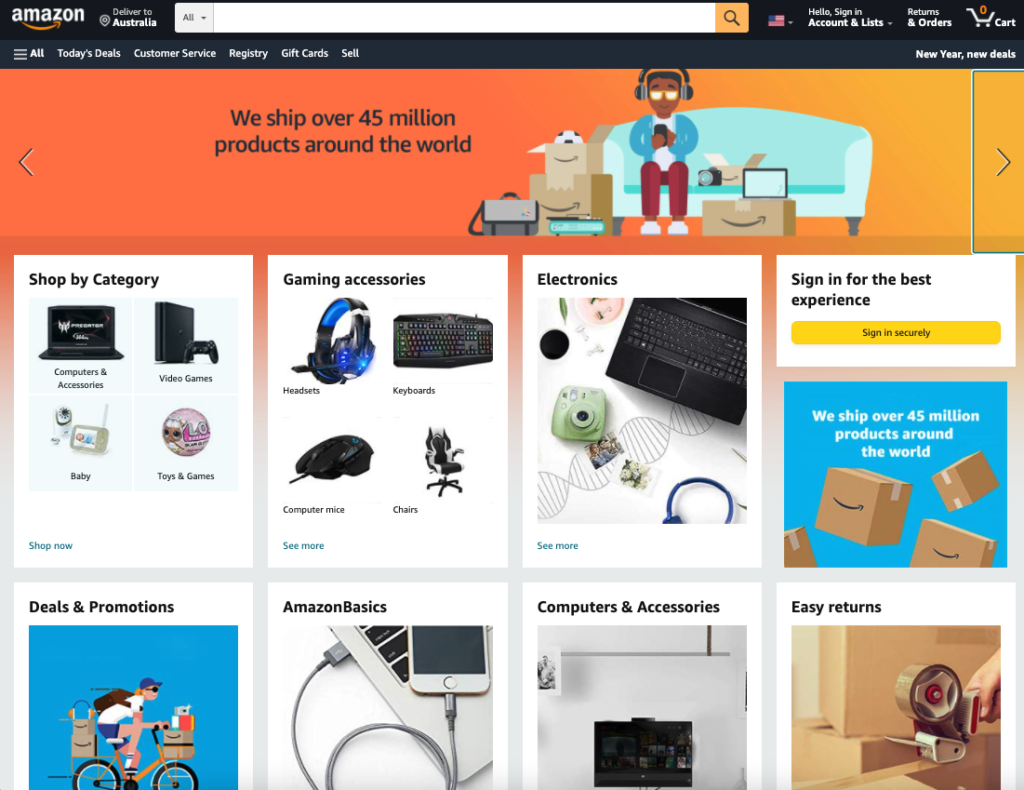
Whilst you can become just a standard Amazon seller that creates listings and ships out products when they sell, there’s actually a few options when it comes to selling on Amazon that we should touch on briefly.
Fulfillment by Seller/Merchant
When you become a seller on Amazon, you are the merchant. You upload your product photos, write the description, set the prices and so on. Then when someone orders the product, you package it up and ship it out.
Fulfillment by Amazon
Known as Amazon FBA, this model is very popular amongst the online gurus in the ecommerce space. To keep it simple, this model involves you as the seller buying your product/s in bulk and sending them to Amazon’s warehouses.
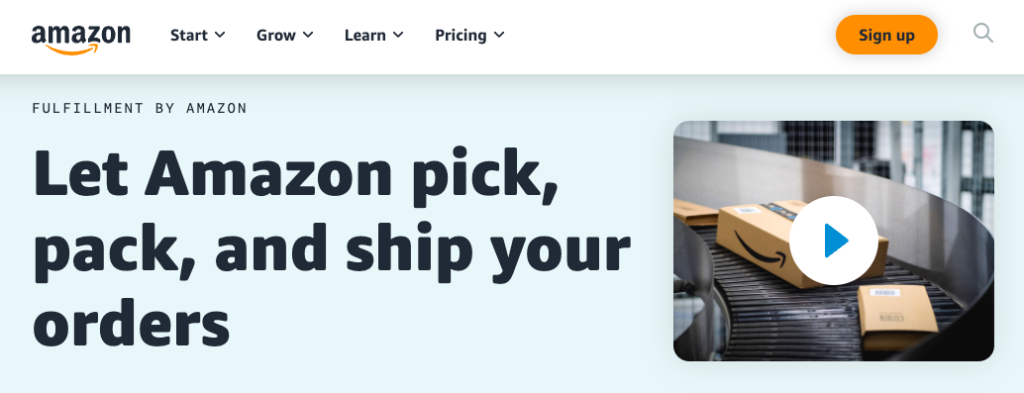
When an order is placed, Amazon then packages up and ships out your product directly to the customers. Amazon also provides the customer support so apart from managing your inventory, this can be a nice “hands-off” business model. You do need some capital to start as an Amazon FBA seller and you should also be prepared to educate yourself and take some risks. Online Arbitrage with Amazon FBA is actually quite a lucrative opportunity, but it's very different from Print on Demand (and requires a bit more startup).
Merch by Amazon
You know how much we love print-on-demand here at Storehacks, but we’ve generally always done it with Shopify. Back in the day we crushed it on Teespring, and Merch by Amazon is actually similar in some ways.
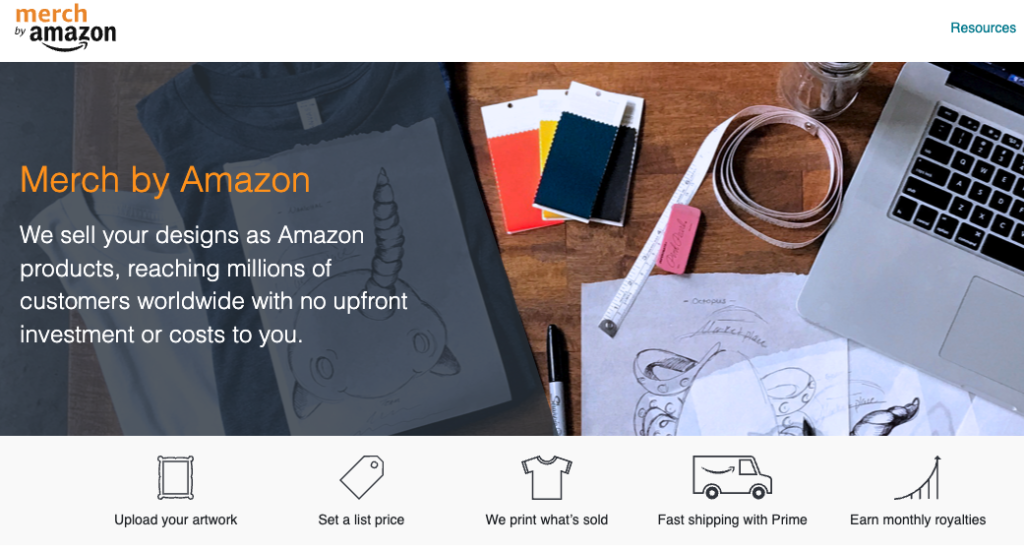
Merch by Amazon allows sellers to upload their designs and sell all sorts of apparel on the Amazon marketplace. The printing and shipping of the apparel products is all handled by Amazon and sellers get a royalty for every sale.
Amazon Pricing
Because Amazon has so many different models, it can be difficult to get your head around their pricing.
To simply register as an Amazon seller you need to pay $39.99 per month. Then for every single sale you make, Amazon charges you a “referral fee” in the range of 8-15%. This referral fee depends on what category your products are in.
If you are using Amazon FBA then you need to factor in storage and fulfillment costs as well.
Merch by Amazon sellers should expect to pocket about 20% profit per sale, depending on how much you actually sell your products for.
Shopify vs Amazon Pros and Cons
Evaluating the pros and cons of anything can be quite subjective, so we’re going to break this down into a few key categories that sellers might look for when exploring their ecommerce options.
Brand Awareness
If you’re looking to launch a slick and exciting new brand to the marketplace and build a loyal following, then you’ll need to invest into things like a logo, brand aesthetic, social media presence, product packaging and more.
If building the next Gymshark is what your heart desires then you might be wasting your time on a marketplace like Amazon.
The Winner: Shopify
Hordes of Customers
This is what we all want, right? Whilst we didn’t touch on this topic, you should have worked out that Shopify gives you everything you need EXCEPT customers. That part is something you need to do yourself. Amazon on the other hand has millions of people browsing at any given moment.
So if you have products that people want and are actively searching for online, Amazon might just be the right choice for you.
The Winner: Amazon
Order Fulfillment
Unless you’re selling little hand-made trinkets that you make in your spare time, in which case Etsy is probably better, then you might be looking to offload some of the packing and shipping work involved in running your ecom business.
If you’re doing print-on-demand or dropshipping with Shopify, your fulfillment partner handles most of the manufacturing and/or shipping of the products much like Amazon’s FBA service.
The Winner: It's a tie! Choose between Shopify Dropshipping/POD and Amazon FBA.
So, Which One Should I Choose?
The age old question that almost all new ecommerce start-ups ask before diving head first into either Shopify or Amazon.
Our answer is…it depends!
The choice between the two really comes down to what your long-term ecommerce goals are.
Choose Shopify if…
- You want to build a long-term brand that is easily recognizable in your chosen niche
- You want to build a huge list of email contacts that you can keep marketing to for years to come
- You love building social media accounts and don’t mind investing in some paid ads
Choose Amazon if…
- You want to get started quickly and just list your products for sale right away
- You just want to send all the products to someone like Amazon FBA to start fulfilling for you
- You don’t want to worry about building an audience or running ads to get customers
Now at this point in the article, the smart cookies reading this might ask
“Why not both?”
And they’d be right. Both Shopify and Amazon are not mutually exclusive and you can actually use both together to build your brand but that should come later on when you are scaling and expanding.
We always recommend just starting with one though before trying to learn the ins and outs of a totally new platform.
Shopify vs Amazon: The Final Verdict
So there you have it. You came for an answer and we said…it depends! 🤣
But the answer for you and your specific situation should be pretty clear by now.
We love building brands and having ownership of something unique that we’ve created. That's why we choose Shopify.
For others, selling on Amazon might tick all the boxes and they might dream of expanding to an Amazon FBA business at some point in the future.
No matter which way you choose to go, make sure you do your research and be willing to invest some capital into the startup of your new ecommerce business.
Everything in life comes with a certain amount of risk but there is nothing quite like the freedom of running your own ecommerce business, from anywhere in the world.
If you want to take your ecommerce game to the next level, I invite you to apply for my PODHacker Accelerator program where we teach aspiring ecom entrepreneurs to grow their business to 6 & 7 figures and beyond.



